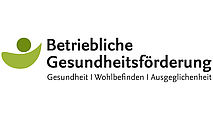Progressive muscle relaxation is a relaxation method that aims to achieve a state of deep relaxation of the whole body by deliberately and consciously tensing and relaxing certain muscle groups.
The method according to Edmund Jacobson is based on the interaction between muscular and mental tension. The relaxation of the muscles caused by the exercise leads to a feeling of calm in the mental experience. This deepened sense of calm in turn causes increasing muscle relaxation, creating a positive cycle.
During the exercise, the individual muscle groups are tensed one after the other, the muscle tension is held briefly and then the tension is released again. The focus is on the alternation between tension and relaxation and on the sensations associated with these different states. The aim of the method is to reduce muscle tension below the normal level. Over time, practitioners learn to induce muscular relaxation whenever they want. In addition, relaxing the muscles can also reduce other signs of physical restlessness or agitation, such as palpitations, sweating or trembling.

